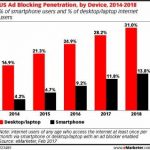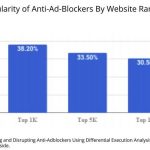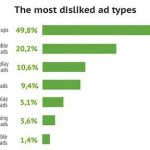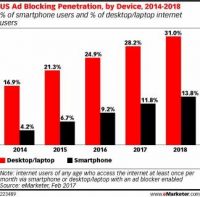Why iOS 9’s Ad Blocking Isn’t Dire For Advertisers
With Apple’s iOS 9 release, all eyes are on mobile ad blocking. Columnist Adam Grow believes the future of mobile advertising is still bright and explains why it’s an opportunity for marketers to engage with people in new ways.
 Three, two, one… The ad screen countdown continues. Without even glancing at the dancing pixels before his eyes, the consumer clicks the “skip” prompt.
Three, two, one… The ad screen countdown continues. Without even glancing at the dancing pixels before his eyes, the consumer clicks the “skip” prompt.
With ads shown in nearly every nook and cranny of the real estate we affectionately dub “the web,” consumers are increasingly — do I dare say — ignoring the very message advertisers have worked so hard to share with them.
What complicates matters is the continued increase in deployment of ad-blocking software — an uptick of 48 percent in 2015, accounting for an estimated $21.8 billion in lost revenue from unseen ads globally.
Apple has taken notice of this growing trend and last month announced that iOS 9 will enable ad blocking for mobile through its default Safari browser. The news generated a firestorm of reports and opinions, with critics and consumers alike quick to share their rants and raves.
By now it’s clear that blocking ads on the mobile web affects publishers, but not much has been said about the impact on advertisers.
The Numbers
Earlier this year, ComScore released a study indicating that US smartphone consumers spent over 7X more time on apps than on a mobile browser. Tablet usage wasn’t much different, with 5X as much time spent on mobile apps as on the mobile web.
So ad blocking on the web really shouldn’t affect advertisers too much, right?
But when you look at web consumption, a different picture emerges: 20 percent of all web browsing happens on mobile Safari. Through this lens, there appears to be a lot at stake for advertisers wishing to reach consumers, who can potentially block their ads.
However, there is hope for the advertiser. Ultimately, iOS users must take the time to search and download an ad-blocking app in order for ads to be withheld from their device, and despite the initial climb in ad-blocking app downloads on iOS, there is no clear evidence that this initial uptick will continue.
Android users have had access to ad blockers for some time now, and advertisers have experienced minimal impact thus far. We can expect similar results for advertisers reaching audiences on Apple devices through iOS.
Additionally, ad blocking presents key opportunities for marketers advertising on mobile devices.
In-App Opportunity
Understanding consumer behavior can be an emotional roller coaster for marketers, at times thrilling and exciting, yet terrifying and gut-wrenching at others.
With consumers spending significantly more time on mobile apps than on the mobile web, the growth of mobile web ad blocking shouldn’t be viewed as a scary ride for marketers and instead remind them of exciting opportunities to engage with people in new ways and in new environments, like mobile apps.
However, even thrills can be accompanied with white-knuckle experiences when you don’t know what’s around the next corner.
For instance, earlier this year Forensiq conducted an ad fraud study for in-app advertising — analyzing more than 35,000 apps — and found that more than 13 percent of in-app programmatic traffic was at risk for fraud.
When a consumer downloaded an infected app, the app (while unopened) would display ads in the background at an alarming rate. Other infected apps showed unwarranted programmatic ads to users.
In aggregate, the study found 12 million mobile devices to be infected from the sample studied. The analytics firm estimated advertisers lost a total of $857 million as a result.
So you may be thinking, why should I be advertising on in-app inventory? Ad fraud is everywhere, much more so on the programmatic web — up to 31 percent, SunTrust Robinson Humphreys analysts told Adweek. This rate is more than half the ad fraud rate of in-app mobile advertising.
Mobile in-app inventory, while not completely free of ad fraud, provides advertisers greater surety that their ads are seen, in a native environment, no less. Moreover, with advanced in-app functionality, advertisers can do much more to engage audiences without re-directing them outside the app.
As consumers continue to spend more time within apps than on the mobile web, in 2016 it will become even clearer that mobile in-app advertising should be a key strategy for advertisers to engage consumers.
The Future Of Mobile Advertising
Apple does not hold the ubiquitous position of being held in every consumer’s hand. Then again, the future of mobile advertising will no longer be confined to what devices people hold but by the brand experiences they demand.
The trend towards a borderless advertising ecosystem is not that far away — soon ad networks will be created for our household appliances, wearables and other internet-connected “things” as they surface.
As ad blocking becomes more of an issue within this ecosystem, marketers would do well to align themselves with ad partners that have the strength and experience to deliver compelling experiences across devices to targeted audiences. Are you ready for the future of mobile advertising?
Some opinions expressed in this article may be those of a guest author and not necessarily Marketing Land. Staff authors are listed here.
(Some images used under license from Shutterstock.com.)
Marketing Land – Internet Marketing News, Strategies & Tips
(40)















